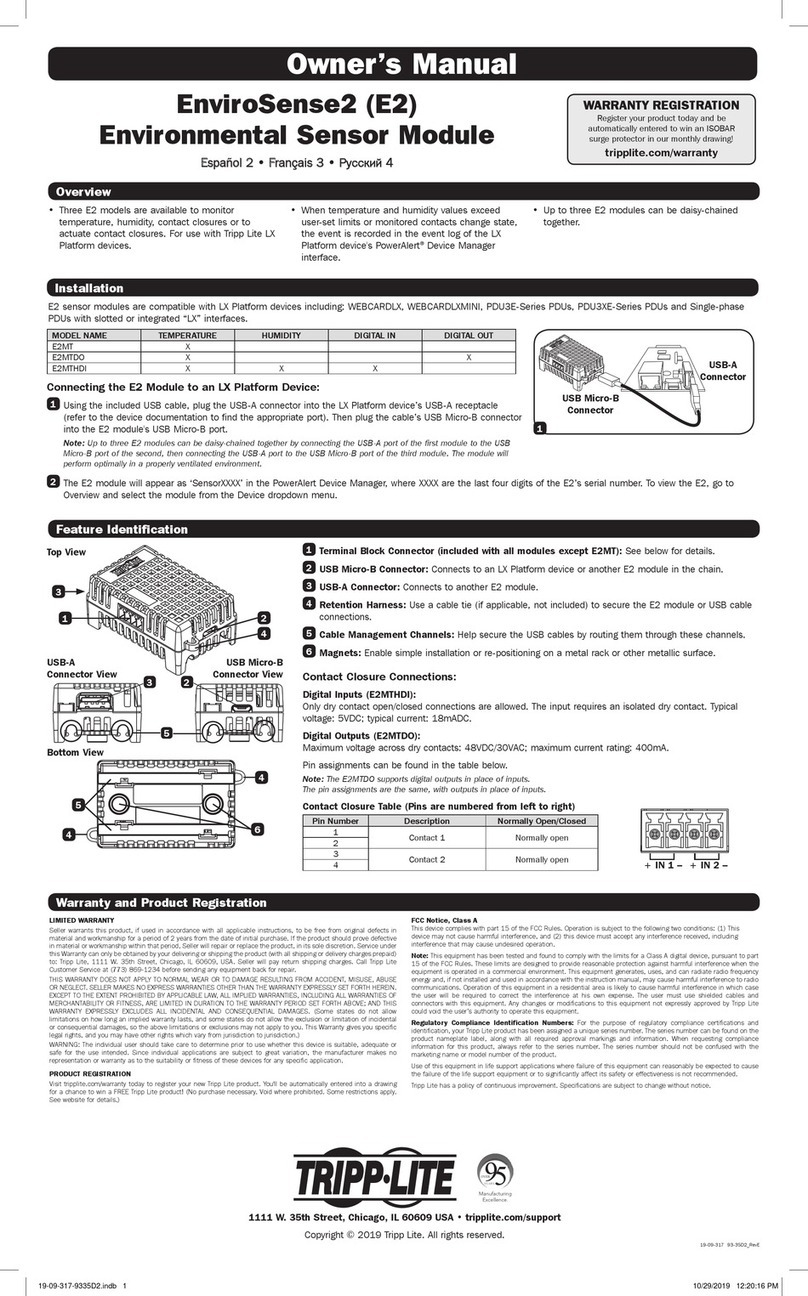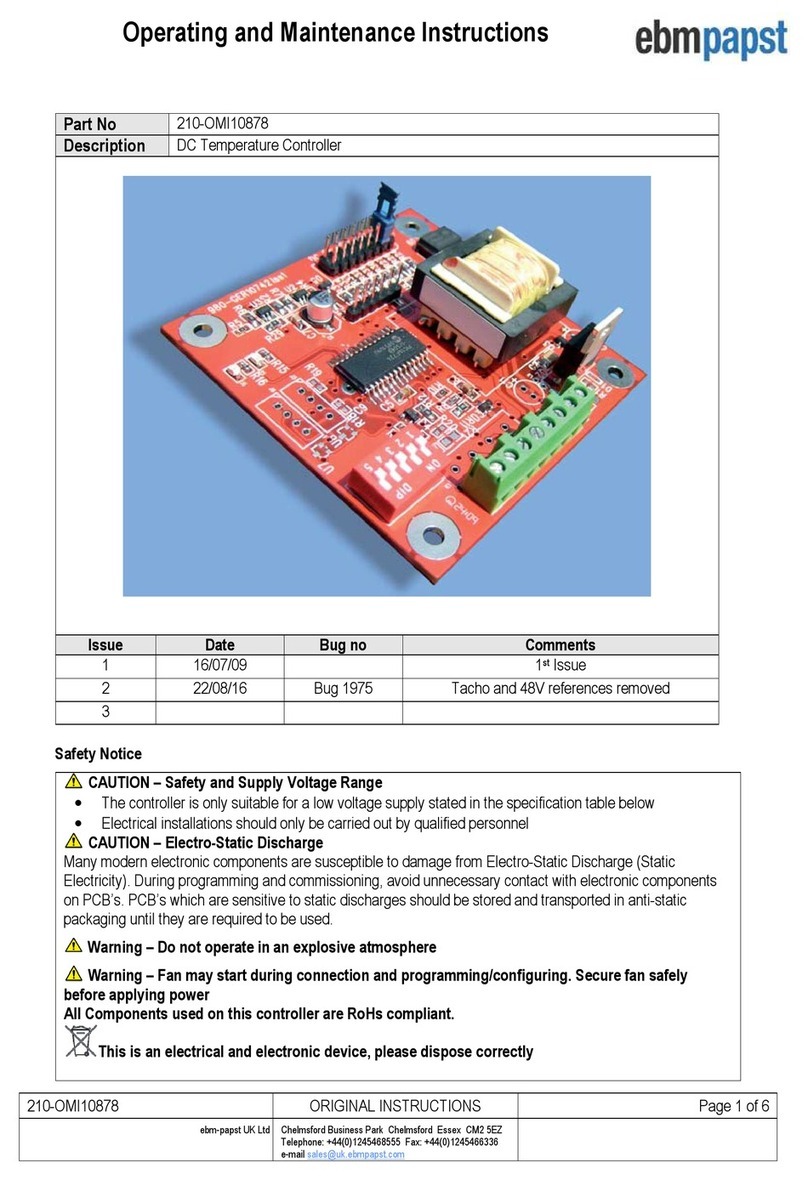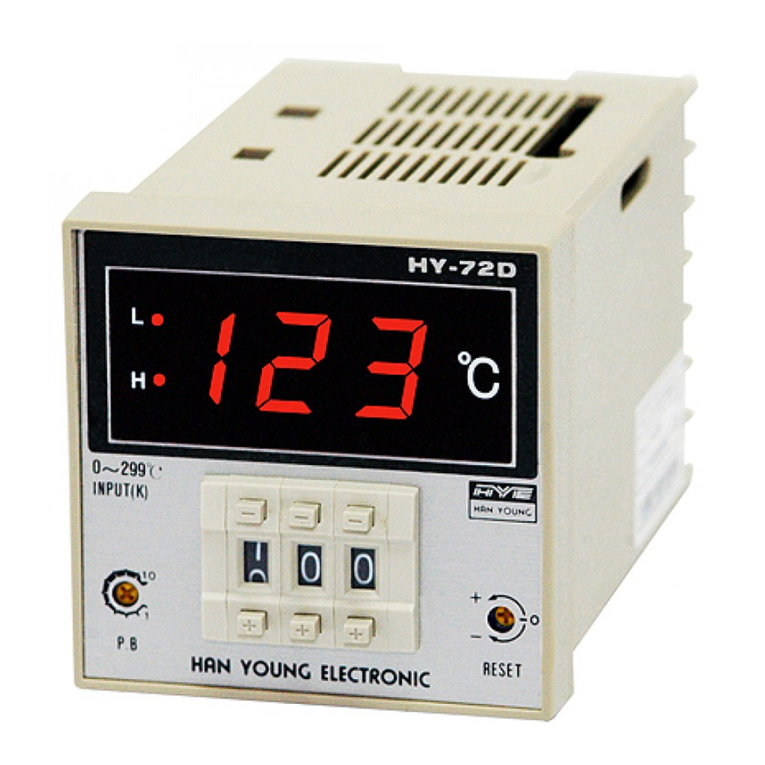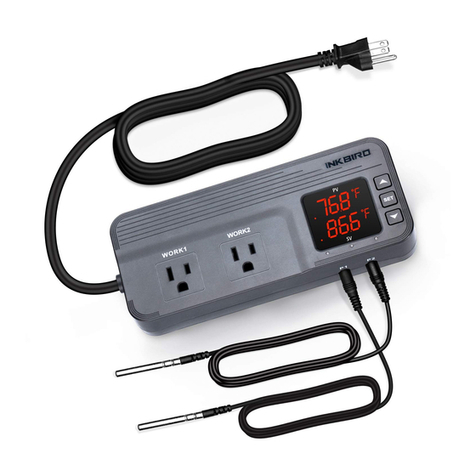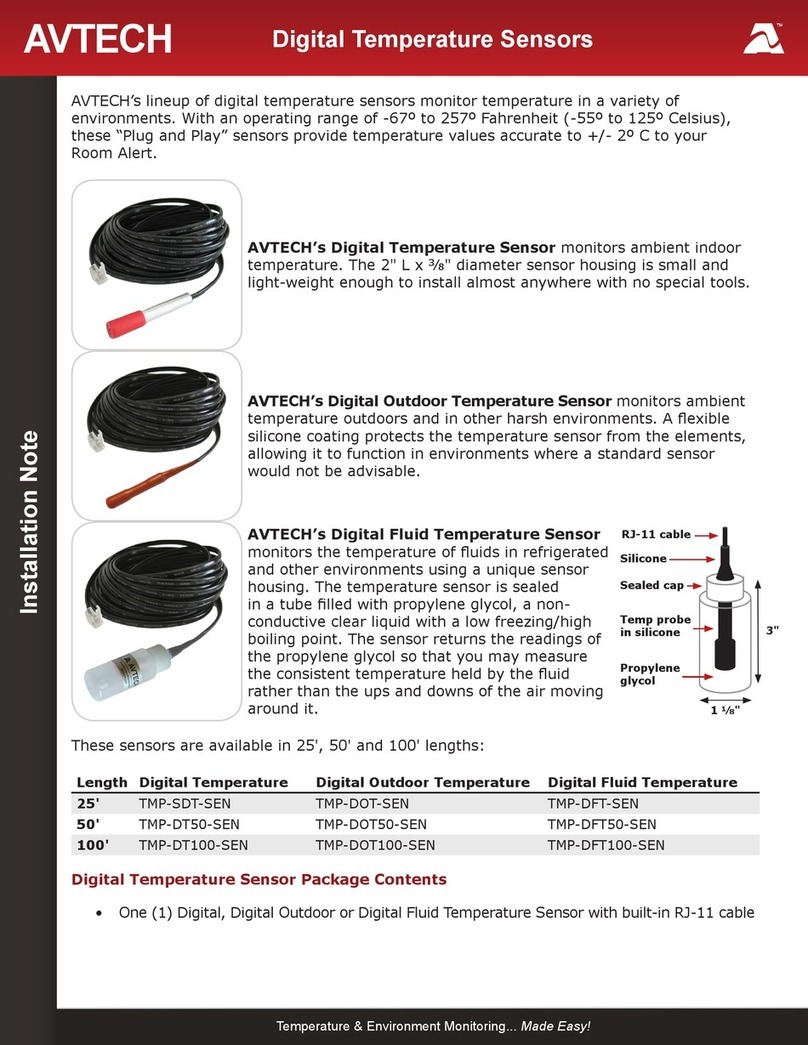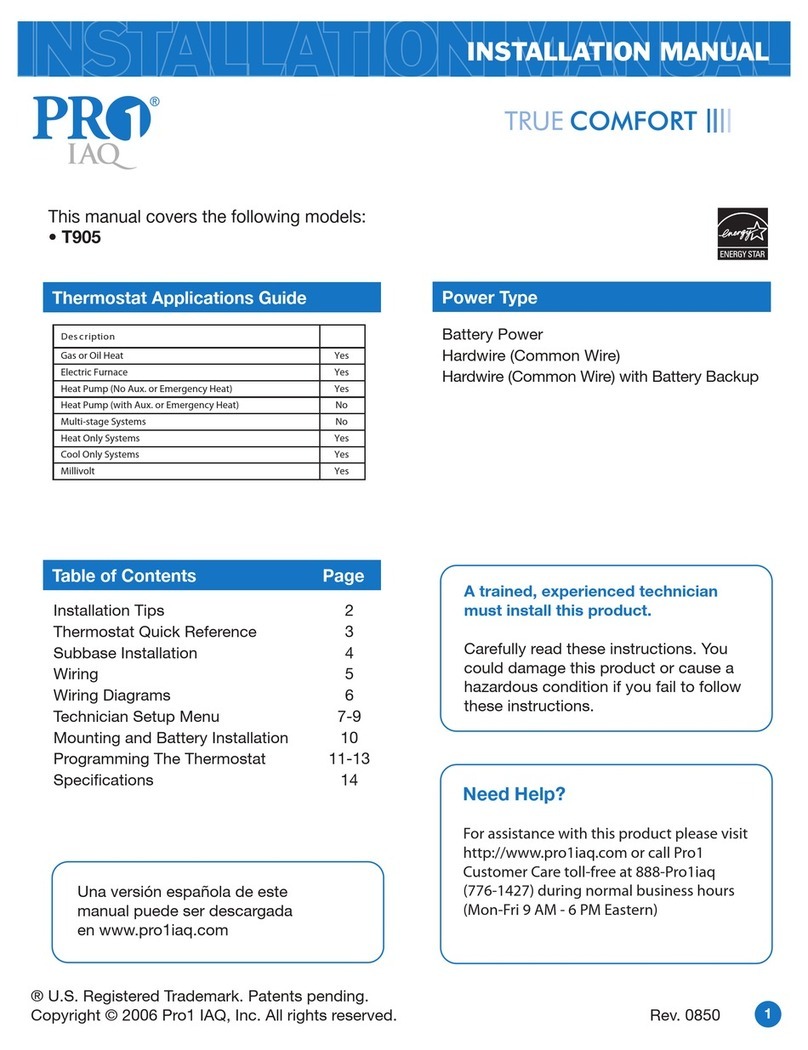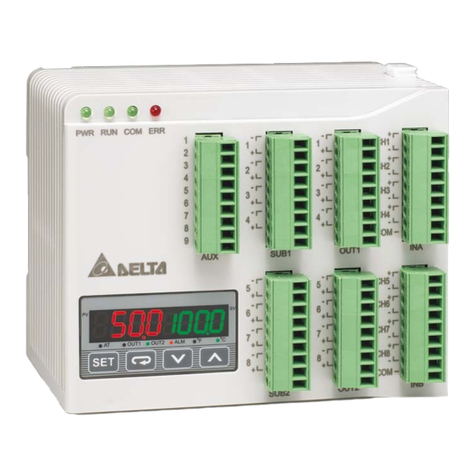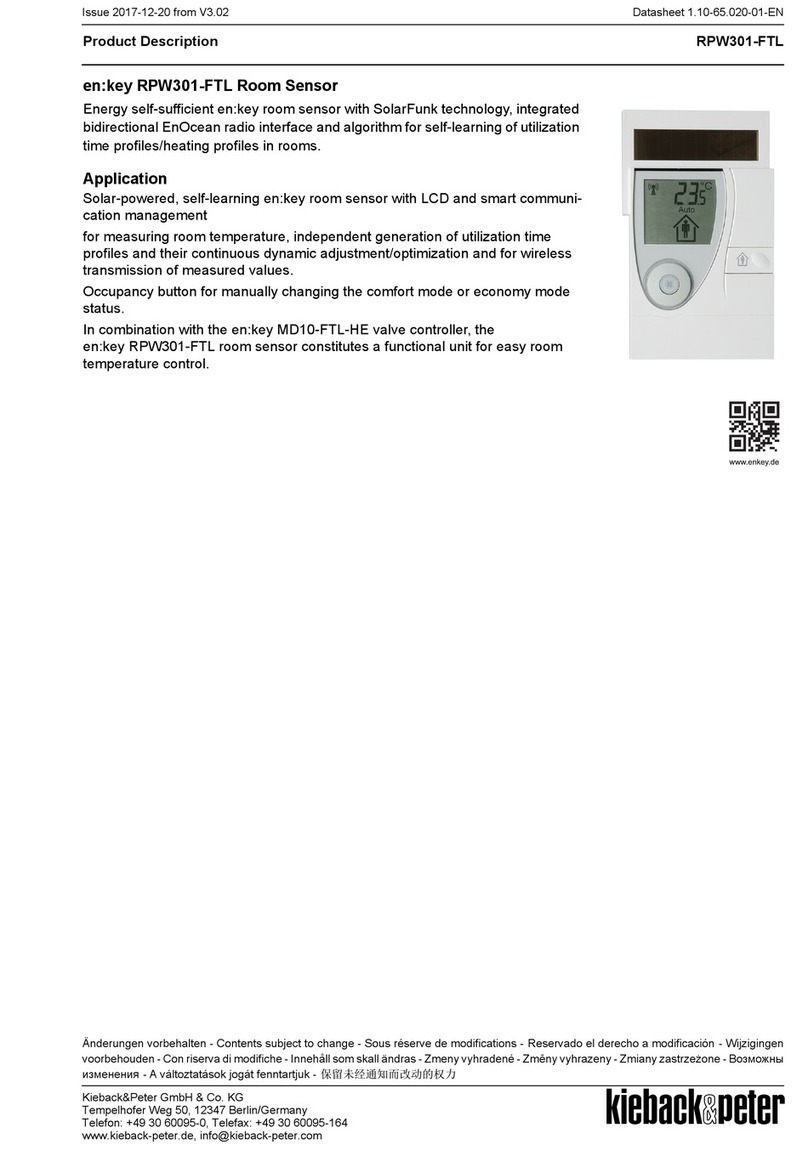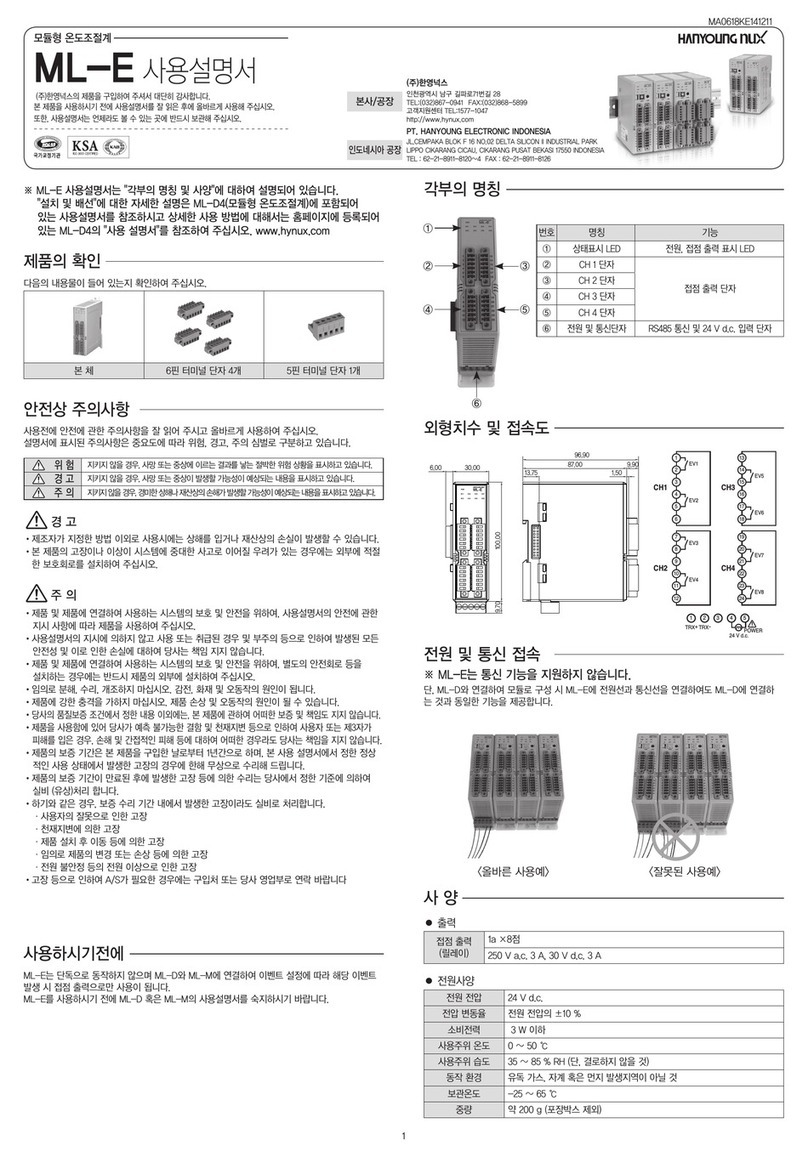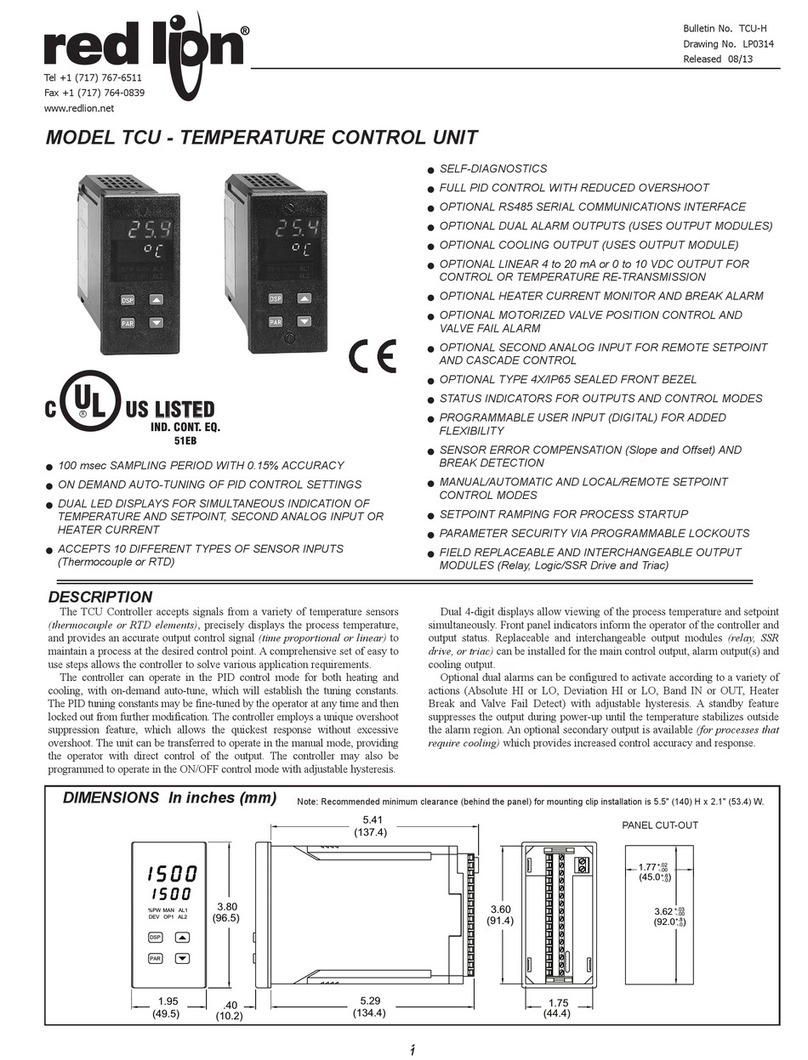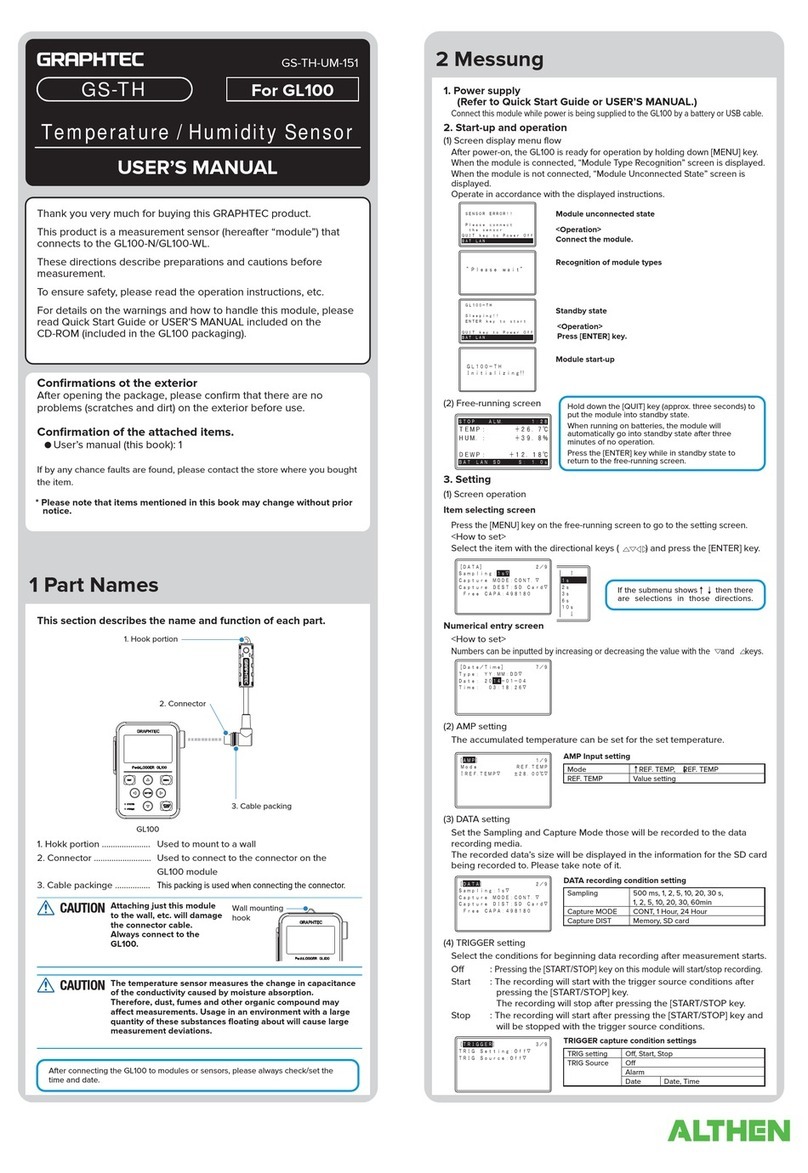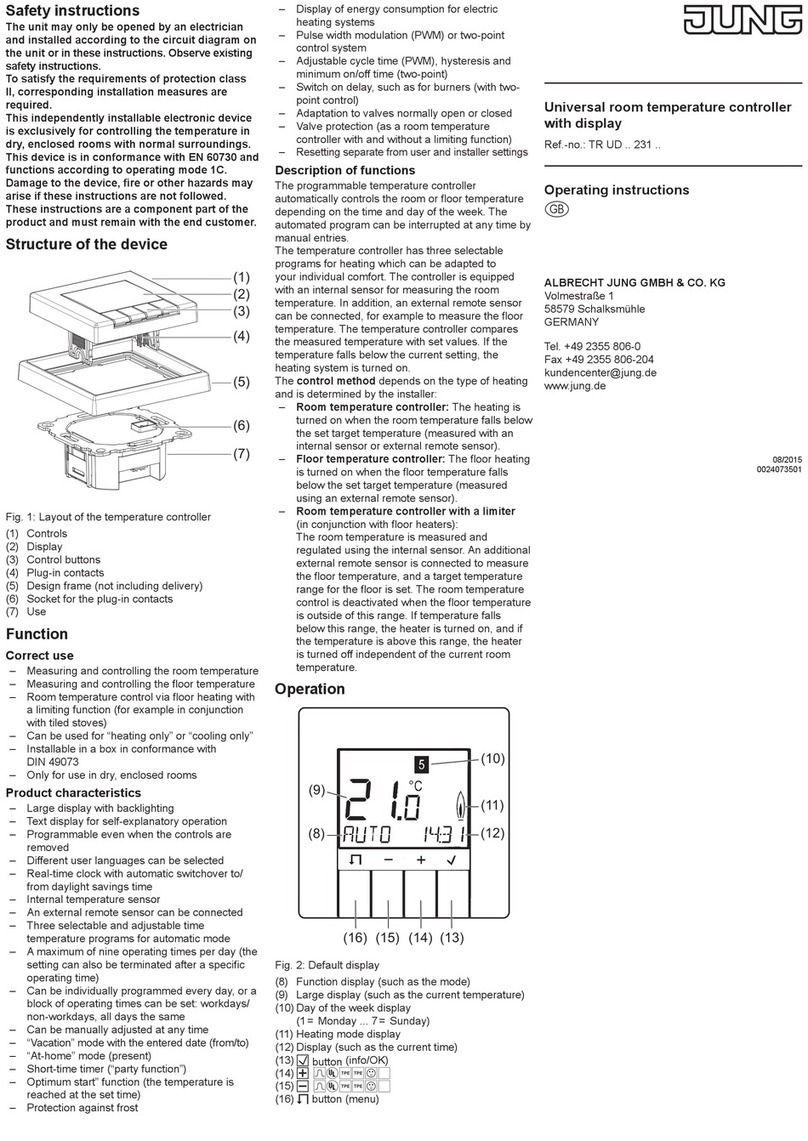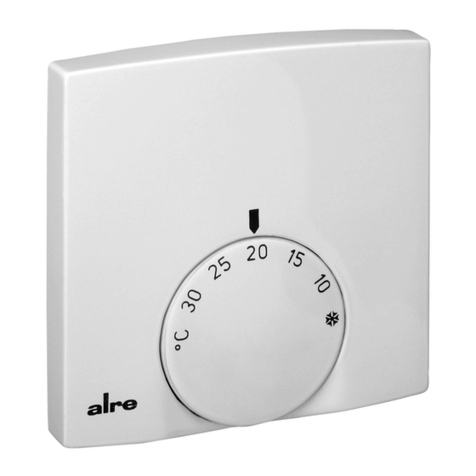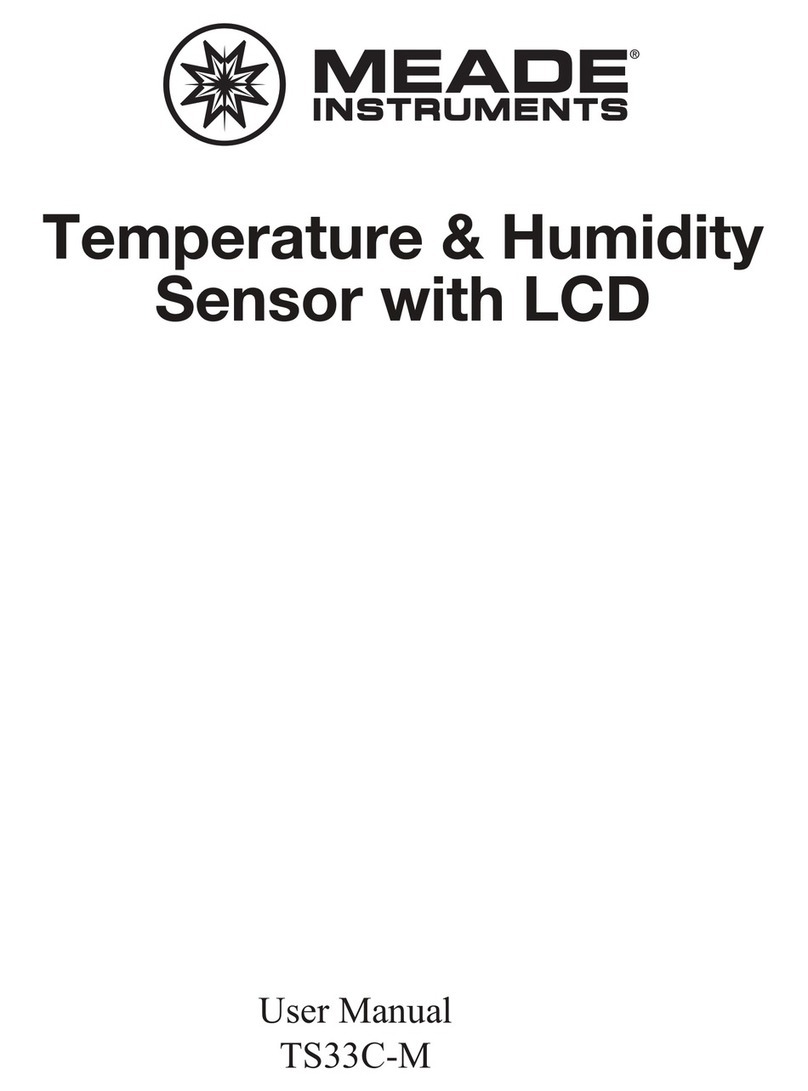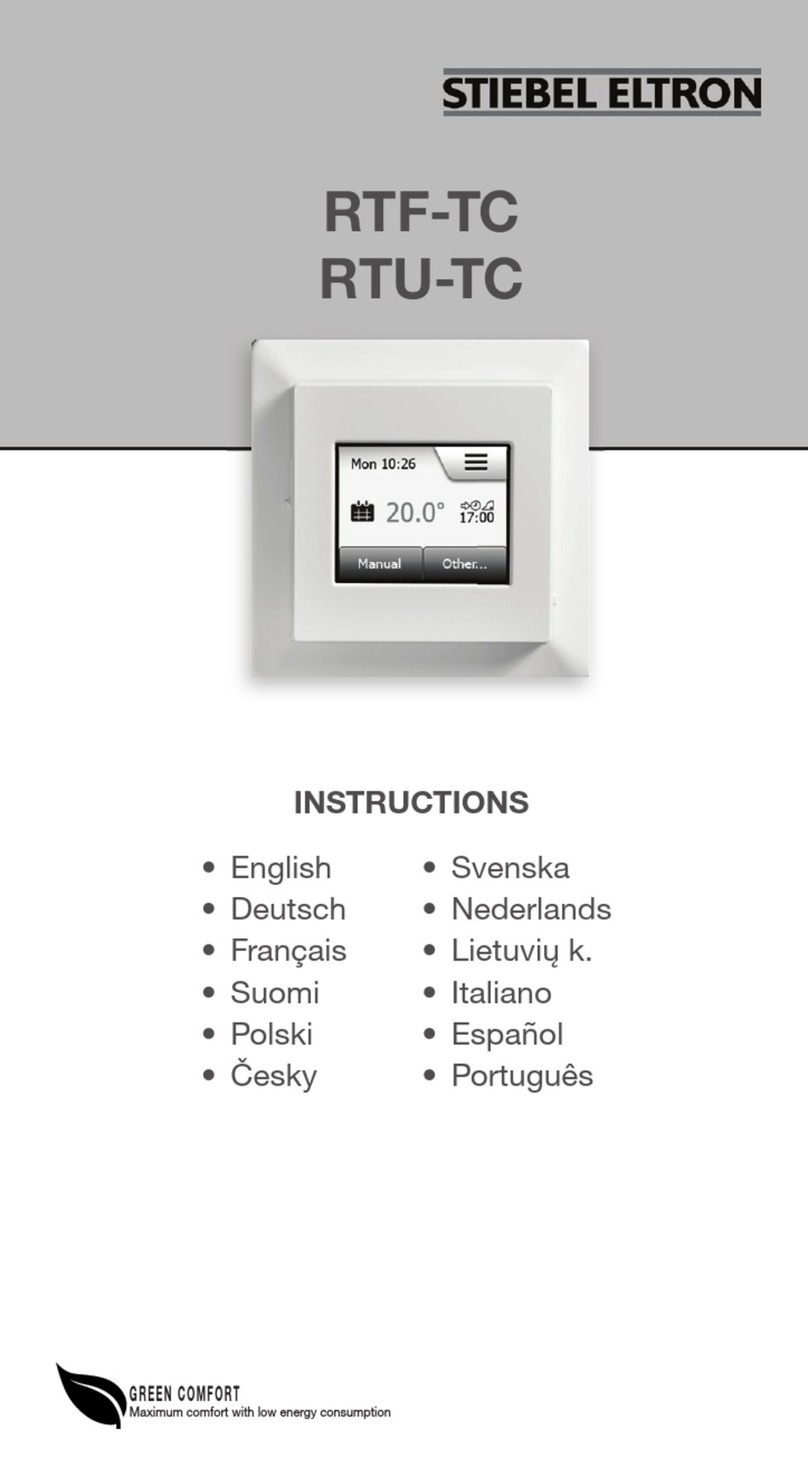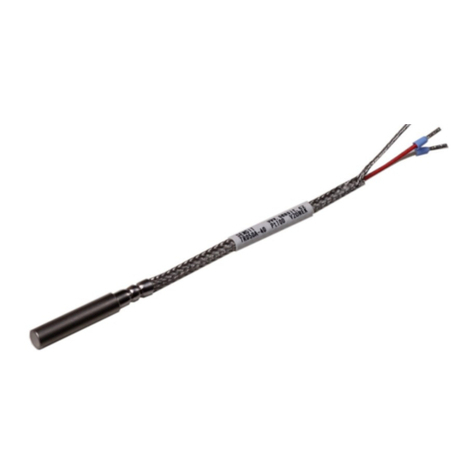Giacomini KTD3 User manual

Read carefully before installation, commissioning and operation!
Temperature Dierence Controller MTDC
(Giacomini code: KTD3)
Installation and operating instructions

A. - Safety instructions 4
A.1 EC declaration of conformity 4
A.2 General instructions 4
A.3 Explanation of symbols 4
A.4 Changes to the unit 5
A.5 Warranty and liability 5
B. - Description of controller 6
B.1 Specications 6
B.2 Temperature resistance table for Pt1000 sensors 6
B.3 About the controller 7
B.4 Scope of supply 7
B.5 Disposal and pollutants 7
C. - Installation 8
C.1 Wall installation 8
C.2 Electrical connection 9
C.3 Installing the temperature sensors 10
D. - Terminal connection 11
D. - Terminal connection diagram 11
D.1 Hydraulic variants 12
E. - Operation 14
E.1 Display and input 14
E.2 Commissioning help 15
E.4 Menu sequence and menu structure 16
1. - Measurement values 16
2. - Statistics 17
2.1. - Operating hours 17
2.2. - Heat output 17
2.3. - Graphic overview 17
2.4. - Message log 17
2.5. - Reset/clear 17
3. - Operating modes 18
3.1. - Automatic 18
3.2. - Manual 18
3.3. - O 18
3.4. - Tmax S2 19
4. - Settings 19
4.1. - Tmin S1 19
4.3. - Priority Storage 1 19
4.4. - ∆T Solar S (X) 19
4.5. - Tmax S2 20
4.6. - Priority Storage 2 20
4.7. - ΔT Solar S3 20
4.8. - Tmax S3 20
4.13. - Tmax SB (pool) 20
4.14. - Tmax SB WT (pool heat exchanger) 21
4.15. - T priority 21
4.16. - Loading time 21
4.17. - Increase 21
5. - Protective functions 22
5.1. - System protection 22
5.2. - Collector protection 22
5.3. - Recooling 23
5.4. - Frost protection 23
5.5. - Seizing protection 23
5.6. - Col.- Alarm 23
6. - Special functions 24
6.1. - Program selections 24
6.2. - Signal V1 24
6.2.1. - Type of pump 24
6.2.2. - Pump 24
6.2.3. - Output Signal 24
6.2.4. - 0-10V / PWM o 25
6.2.5. - 0-10V / PWM on 25
6.2.6. - 0-10V / PWM max 25
6.2.7. - Show signal 25
6.3. - Speed control 26
6.3.1. - Modes 26
6.3.2. - Purging time 27
6.3.3. - Sweep time 27
6.3.4. - max. speed 27
6.3.5. - min. speed 27
6.3.6. - Setpoint 27
6.3.7. - Set ΔT 27
6.5. - Relay functions 28
6.5.1. - Solar bypass 28
6.5.2. - Thermostat 29
6.5.3. - Cooling 30
6.5.4. - Return ow increase 30
6.5.5. - Field cooling 31
6.5.6. - Anti Legionella 32
6.5.7. - Heat transfer 33
6.5.8. - Dierence 34
6.5.9. - Solid fuel boiler 35
6.5.10. - Error message 35
6.5.11. - Booster pump 35
6.5.12. - Parallel operation R (X) 36
6.5.13. - Always on 36
6.5.14. - Heating circuit 36
6.6. - Heat quantity 37
6.6.1. - Constant ow 37
6.6.2. - Flow sensor (X) 37
6.6.3. - Return sensor 37
6.6.4. - Anti freeze type 37
6.6.5. - Glycole percentage 37
6.6.6. - Flow rate (X) 37
6.6.7. - Oset ∆ T 37
6.7. - Sensor calibration 38
6.8. - Commissioning 38
6.9. - Factory settings 38
6.10. - Start aid function 38
6.11. - Time and date 39
6.12. - Daylight saving time 39
6.13. - Eco display mode 39
6.14. - Temperature unit 39
6.15. - Network 39
6.15.1. - Access Control 39
6.15.2. - Ethernet 39
7. - Menu lock 40
8. - Service values 41
9. - Language 42
Z. - Malfunctions 43
Z.1. Malfunctions with error messages 43
Z.2 Replacing the fuse 44
Z.3 Maintenance 45
Z.4 CAN-Bus 46
Content

3
This manual applies to the hardware MTDC versions 5, January 2015
When you are unsure which version you have, check the type label on the side
of the controller.
If the version is not readable here, open the controller’s “Service values” menu.
The version is shown in the rst line of the service values.
M
AC 100...240V, 50/60Hz, 460VA
MTDC Version 5

4
Safety instructions
By axing the CE mark to the unit the manufacturer declares that the Temperature-
Dierence-Controller MTDC, conforms to the following relevant safety regulations:
- EC low voltage directive 2006/95/EC
- EC electromagnetic compatibility directive 2004/108/EC
Conforwithy has been veried and the corresponding documentation and the EC de-
claration of conforwithy are kept on le by the manufacturer.
A.1 EC declaration of conformity
These installation and operating instructions contain basic instructions and important
information regarding safety, installation, commissioning, maintenance and the optimal
use of the unit. Therefore these instructions must be read completely and understood
by the installation technician/specialist and by the system user before installation, com-
missioning and operation of the unit.
The valid accident prevention regulations, VDE regulations, the regulations of the lo-
cal power utility, the applicable DIN-EN standards and the installation and operating
instruction of the additional system components must also be observed. The controller
does not under any circumstances replace any safety devices to be provided by the
customer!
Installation, electrical connection, commissioning and maintenance of the unit may
only be carried out by specialists who possess the appropriate training.
For the user: Make sure that the specialist gives you detailed information on the func-
tion and operation of the controller. Always keep these instructions in the vicinity of the
controller.
A.2 General instructions
Danger
Caution
A.3 Explanation of symbols
Failure to observe these instructions can result in danger to life from
electric voltage.
Danger
Failure to observe these instructions can result in serious damage to
health such as scalding, or even life-threatening injuries.
Caution
Failure to observe these instructions can result in destruction of the unit
or the system, or damage to the environment.
Information which is especially important for the function and optimal use
of the unit and the system.
It is essential that you read this!

5
Safety instructions
A.4 Changes to the unit
The controller has been manufactured and tested with regard to high quality and
safety requirements. The unit is subject to the statutory guarantee period of two years
from the date of sale.
The warranty and liability shall not include, however, any injury to persons or material
damage that is attributable to one or more of the following causes:
- Failure to observe these installation and operating instructions
- Improper installation, commissioning, maintenance and operation
- Improperly executed repairs
- Unauthorised structural changes to the unit
- Installation of additional components that have not been tested
together with the unit
- Any damage resulting from continued use of the unit despite an
obvious defect
- Failure to use original spare parts and accessories
- Use of the device for other than its intended purpose
- Operation above or below the limit values listed in the
specications
- Force majeure
A.5 Warranty and liability
- Changes, additions to or conversion of the unit are not permitted without the writ-
ten permission from the manufacturer
- It is likewise forbidden to install additional components that have not been tested
together with the unit
- If it becomes clear that safe operation of the unit is no longer possible, for exam-
ple because of damage to the housing, then turn the controller o immediately
- Any parts of the unit or accessories that are not in perfect condition must be
exchanged immediately
- Use only original spare parts and accessories from the manufacturer.
- Markings made on the unit at the factory must not be altered, removed or made
illegible
- Only the settings actually described in these instructions may be made on the
controller
Changes to the unit can compromise the safety and function of the unit
or the entire system.
Danger

6
B.1 Specications
°C 0 10 20 30 40 50 60 70 80 90 100
Ω1000 1039 1077 1116 1155 1194 1232 1270 1308 1347 1385
Description of controller
Electrical specications:
Mains voltage 100 - 240VAC
Mains frequency 50 - 60Hz
Power consumption 0,5W - 2,5W
Internal fuse 2A/250V slow blow
Protection category IP40
Protection class II
Overvoltage Category II
Degree of Pollution Category II
mechanical relay 460VA for AC1 / 460W for AC3= 2 (R1) 2 (R1/R2)
0-10V output, tolerance 10%, 10 k Ω load or
PWM output freq. 1 kHz, level 10 V 1 (V1)
PT1000 sensor input measuring range -40°C to 300°C 4 (S1 - S4)
Network connections CAN Bus
Permissible cable length of sensors and appliances:
Collector and outdoor sensor <30m
other PT1000 sensors <10m
CAN <3m
PWM / 0...10V <3m
mechanichal relay <10m
Real Time Clock RTC with 24 hour power reserve
Permissible ambient conditions:
Ambient temperature
for controller operation 0°C...40°C
for transport/storage 0°C...60°C
Air humidity
for controller operation max. 85% rel. humidity at 25°C
for transport/storage no moisture condensation perwithted
Other specications and dimensions
Housing design 2-part, ABS plastic
Installation methods Wall installation, optionally panel installation
Overall dimensions 163mm x 110mm x 52mm
Aperture dimensions 157mm x 106mm x 31mm
Display Fully graphical display, 128 x 64 dots
Light diode Multicolor red/green
Operation 4 entry keys
B.2 Temperature resistance table for Pt1000 sensors

7
The Temperature Dierence Controller MTDC facilitates ecient use and function
control of your solar or heating system. The device is impressive most of all for its
functionality and simple, almost self-explanatory operation. For each step in the input
process the individual entry keys are assigned to appropriate functions and explained.
The controller menu contains headwords for the measured values and settings, as well
as help texts or clearly-structured graphics.
The MTDC can be used as a temperature dierence controller for the various system
variants illustrated and explained under B.5. Important characteristics of the MTDC:
• Depiction of graphics and texts in a lighted display
• Simple viewing of the current measurement values
• Analysis and monitoring of the system by means of statistical graphics,etc.
• Extensive setting menus with explanations
• Menu block can be activated to prevent unintentional setting changes
• Resetting to factory settings
B.3 About the controller
Description of controller
• Temperature Dierence Controller MTDC
• 3 screws 3,5 x 35 mm and 3 plugs 6 mm for wall installation
• 6 strain relief clips with 12 screws, replacement fuse T2A / 250V slow-blow
• Installation and operating instructions MTDC
Optionally contained depending on design/order:
• PT1000 temperature sensors and immersion sleeves
Additionally available:
• Pt1000 temperature sensor, immersion sleeves, overvoltage protection,
• Datalogger with Ethernet connection
B.4 Scope of supply
B.5 Disposal and pollutants
The unit conforms to the European RoHS directive 2011/65/EU for the restriction of the
use of certain hazardous substances in electrical and electronic equipment.
Caution
The unit must not under any circumstances be disposed of with ordinary
household refuse. Dispose of the unit only at appropriate collection
points or ship it back to the seller or manufacturer.

8
C.1.1
C.1.2
Caution
C.1 Wall installation
Install the controller only in dry areas and under the ambient conditions de-
scribed under B.1 “Specications”. Carry out the following steps 1-8.
1. Unscrew cover screw completely
2. Carefully pull upper part of housing
from lower part.
3. Set upper part of housing aside, being
sure not to touch the electronics when
doing so.
4. Hold the lower part of the housing up
to the selected position and mark the 3
mounting holes. Make sure that the wall
surface is as even as possible so that the
housing does not become distorted when
it is screwed on.
5. Using a drill and size 6 bit, drill 3 holes
at the points marked on the wall and push
in the plugs.
6. Insert the upper screw and screw it in
slightly.
7. Fit the upper part of the housing and
insert the other two screws.
8. Align the housing and tighten the three
screws.
Installation

9
Installation
C.2 Electrical connection
Danger
Before working on the unit, switch o the power supply and secure it against
being switched on again! Check for the absence of power!
Electrical connections may only be made by a specialist and in compliance
with the applicable regulations. Do not use the controller if the housing
shows visible damage.
Caution
Low-voltage cables such as temperature sensor cables must be routed
separately from mains voltage cables. Feed temperature sensor cables only
into the left-hand side of the unit, and mains voltage cables only into the
right-hand side.
Caution
The customer must provide an all-pole disconnecting device, e.g. a heating
emergency switch.
Caution
The cables being connected to the unit must not be stripped by more than
55 mm, and the cable jacket must reach into the housing just to the other
side of the strain relief.

10
1.Select necessary program/hydraulics
(Resp. D.1 - Hydraulic variants)
2.Strip cables by 55 mm max., insert,
t the strain relief devices, strip the last
8-9mm of the wires (Fig. C.2.1)
3.Open the terminals using a suitable
screwdriver (Fig. C.2.1) and make electri-
cal connections on the controller (s. D.1)
4.Ret upper part of housing and fasten
with screw.
5.Switch on mains voltage and place con-
troller in operation.
C.2.1
Installation
C.3 Installing the temperature sensors
The temperature sensor cables must be routed separately from mains voltage
cables, and must not, for example, be routed in the same cable duct!
The controller operates with Pt1000 temperature sensors which are accurate to the
degree, thus ensuring optimal control of system functions.
If desired the sensor cables can be extended to a maximum of 30 m using a
cable with a cross-section of at least 0.75 mm². Make sure that there is no con-
tact resistance! Position the sensor precisely in the area to be measured!
Only use immersion, pipe-mounted or at-mounted sensor suitable for the spe-
cic area of application with the appropriate permissible temperature range.
Caution
Caution
Instructions for clamps:
1. Insert screw driver into the upper hole. Push the lock
clamp inside down. Keep the screw driver in this positi-
on.
2. Insert cable into the lower opening.
3. Remove screw driver. The clamp will lock the cable.
C.2.2

11
Installation
Low voltage max. 12VAC/DC
Terminal: Connection for:
S1 Temperature sensor 1
S1 Temperature sensor 1 (GND)
S2 Temperature sensor 2
S2 Temperature sensor 2 (GND)
S3 Temperature sensor 3
S3 Temperature sensor 3 (GND)
V1 0-10V/PWM speed controlled
output for High eciency pumps
- speed controlled output for 0-10V
gnd. / PWM for High eciency
pumps
S4 Temperature sensor 4
S4 Temperature sensor (GND)
Mains voltage 230VAC 50-60Hz
Terminal: Connection for:
N Neutral conductor N
R1 Relay R1
N Neutral conductor N
L Mains phase conductor L
N Neutral conductor N
R2 Relay R2
The PE protective conductor must be con-
nected to the PE metal terminal block!
Low voltage
max. 12V
Achtung
Main voltage
230VAC
Gefahr
S4
VFS2 VFS1CAN CAN
V1
-
S4 S3 S3 S2 S2 S1 S1 PELV N
R2 L N R1 N
D. - Terminal connection diagram
Low voltage
max. 12V
Caution
Main voltage
230VAC
Danger
On the Controller platine:
CAN1 CAN Bus connection
CAN2 CAN Bus connection

12
Description of controller
D.1 Hydraulic variants
Caution
The following illustrations should be viewed only as schematic diagrams showing the respective
hydraulic systems, and do not claim to be complete. The controller does not replace safety
devices under any circumstances. Depending on the specic application, additional system
components and safety components may be mandatory, such as check valves, non-return
valves, safety temperature liwithers, scalding protectors, etc., and must therefore be provided.
ΔT
Storage transfer
ΔT
Universal Delta T. Shuto valve
Thermostat
S1
S1
S1
S1
S1
S1
S1
S1
S2
S2
S2
S2
S2
S4
S2
S2
S2
R1(V1)
R1(V1)
R1(V1) R1(V1)
R2
R2
R2
R1 R1(V1)
R1(V1)
S1 S1
S2
S2
S3
S3
R2
R2
R1(V1)
R1(V1)
Solar with storage Solar with pool Solid fuel boiler with storage
Solar with pool and heat exchanger
Solar with two-zone storage
Solar with heating circuit
Solar with thermostat (auxiliary heating) Solar with heating circuit
S1
S2
R2
S3
S4
R1(V1)
123
456
789
10 11 12

13
Description of controller
Hydraulic variants
❄
Solar with thermostat and switching valve
Solar with cooling 1 (collector cooling)
Solar with storage transfer
Solar with storage and solid-fuel boiler Solar with cooling 2 (collector cooling)
S1
S1
S1
S1
S1
S1
S1 S1
S1
S1
S1
S4
S4
S2
S2
S2
S2
S2
S4
S3
S3
S2
S2 S2
S2
S2
S2
R2
S3
R2
S3 S3
S3
S4
R1(V1)
R1(V1)
R1(V1)
R1(V1)
R1(V1)
R2
R1(V1)
R1(V1)
R1(V1)
R1(V1)
R2
R2
R2
R2
R2
R2
R2
R2
R1(V1)
R1(V1)
Solar with pool and heat exchanger
Solar with bypass
Solar with 2 storages and switching valveSolar with 2 collector surfaces and 2 pumps Solar with 2 storages and 2 pumps
Solar with 2 collector surfaces and switching
valve
S1
S2
S4
R1(V1)
R2
Solar with heat exchanger
13 14 15
16 17 18
19 20 21
22 23 24

14
Examples of display symbols:
Pump (rotates in operation)
Valve (direction of ow black)
Collector
Storage tank
Swimming pool
Temperature sensor
Heat exchanger
Charging break
Warning/error message
New information available
(1)
(2)
(3)
(4)
The display (1), with its extensive text and
graphics mode, is almost self-explanatory, al-
lowing easy operation of the controller.
The LED (2) lights up green when a relay is
switched on. The LED (2) lights up red when
operating mode “O” is set. The LED (2) ash-
es slowly red in the operating mode “Manual”.
The LED (2) ashes quickly red when an error
is present.
Entries are made using four keys (3+4), which
are assigned to dierent functions depending
on the situation. The “esc” key (3) is used to
cancel an entry or to exit a menu. If applicable
there will be a request for conrmation as to
whether the changes which have been made
should be saved. The function of each of the
other three keys (4) is shown in the display
line directly above the keys; the right-hand key
is generally has a conrmation and selection
function.
Examples of key functions:
+/- = enlarge/shrink values
▼/▲ = scroll menu down/up
yes/no = approve/reject
Info = additional information
Back = to previous screen
ok = conrm selection
Conrm = conrm setting
Operation
E.1 Display and input
Description of controller
Hydraulic variants
Solar with cooling 3 (collector cooling)
S1
S2
S3
R1(V1)
R2
Solar with storage and solid-fuel boiler and S4 2x Solar
Solid-fuel
boiler Collector
Sensor Radiator
Pump
Valve
3-way valve
R2 on
Heat
exchanger
Fan Storage
Auxiliary
heating
Flow
heater
Swimming pool
S1 S1
S2 S2
S3
S3
S4
S4
R1(V1) R1(V1)
R2
R2
25 26 27

15
E.2 Commissioning help
Parametrisation
1. Set language, time and date
2.a) Start setup wizard (menu 6.8.) The setup wizard
guides through the necessary basic settings in the
correct order. Every parameter is briey explained in
the display. Pressing the „esc“ key takes you back to
the previous setting.
or
2.b) without setup wizard: The settings should be made in the following order:
• menu 9. Language.
• menu 2. Time, Date and Operating Times.
• menu 3. Heating Circuit Settings, all values.
• menu 5. Protection Functions (if any adjustments necessary).
• menu 6. Special Functions (if any adjustments necessary).
NB: The setup wizard can always be selected in Menu 6.8.
Caution: Consider the explanations for the individual parameters on the following pages
and check if further settings are necessary for your application.
3. In Menu 3.2, the operating mode should be set to ‚Manual‘ to test the switch outputs with the
consumers connected and check the sensor values for plausibility. Then set to automatic mode.

16
E.4 Menu sequence and menu structure
The graphics or overview mode appears when
no key has been press for 2 minutes, or when the
main menu is exited by pressing “esc“.
Pressing a key in graphics or overview mode
takes you directly to the main menu. The following
menu items are then available for selection there:
Operation
Caution
The menu “1. Measurement values”
serves to display the currently measured
temperatures.
The menu is closed by pressing “esc” or
selecting “Exit measurement values”.
If “--” appears on the display instead of the measurement value, then
there may be a defective or incorrect temperature sensor.
If the cables are too long or the sensors are not placed optimally, the
result may be small deviations in the measurement values. In this case
the display values can be compensated for by making entries on the
controller. Follow the instructions under 6.7. What measurement values
are displayed depends on the selected program, the connected sensors
and the specic device design.
Measurement values
1. - Measurement values

17
2. - Statistics
Caution
The menu “2. Statistics” is used for func-
tion control and long-term monitoring of
the system.
The menu is closed by pressing “esc” or
selecting “Exit statistics”.
For analysis of the system data it is essential for the time to be set ac-
curately on the controller. Please note that the clock does not continue
to run if the mains voltage is interrupted, and must therefore be reset.
Improper operation or an incorrect time may result in data being deleted,
recorded incorrectly or overwritten. The manufacturer accepts no liabil-
ity for the recorded data!
Statistics
2.1. - Operating hours
Display of operating hours of the solar pump connected to the controller; various time
ranges (day-year) are available.
2.2. - Heat output
Display of the heat output of the system.
2.3. - Graphic overview
This provides a clearly-organised display of the data listed under 2.1. - 2.3. as a bar
graph. Various time ranges are available for comparison. The two left-hand keys can
be used to page through the data.
2.4. - Message log
Resetting and deleting the individual analyses. The function “All statistics” clears all
analyses but not the error messages.
2.5. - Reset/clear
Display of the last 10 events occurring in the system with indication of date and time.

18
3. - Operating modes
In menu “3. Operating modes” the con-
troller can either be placed in automatic
mode, switched o, or placed in a manual
operating mode.
The menu is closed by pressing “esc” or
selecting “Exit operating modes”.
Automatic mode is the normal operating mode of the controller. Only automatic mode
provides proper controller function taking into account the current temperatures and
the parameters that have been set! After an interruption of the mains voltage the con-
troller automatically returns to the last operating mode selected!
3.1. - Automatic
Operating modes
3.2. - Manual
The relay and thus the connected consumer are switched on and o by pressing a
key, with no regard to the current temperatures and the parameters which have been
set. The measured temperatures are also shown to provide an overview and function
control.
3.3. - O
When the operating mode “O” is activated, all controller functions are
switched o. This can lead, for example, to overheating on the solar
collector or other system components. The measured temperatures are
sstill displayed to provide an overview.
Caution
Danger
When operating mode “Manual” is activated, the current temperatures
and the selected parameters are no longer considered. There is a dan-
ger of scalding or serious damage to the system. The operating mode
“Manual” may only be used by specialists for brief function tests or dur-
ing commissioning!

19
Various settings can be made depending on the selection of hydraulic variant
1-20. The following pages contain generally valid descriptions for the settings.
Caution
Priority of Storages S1
This determines the order, in which the storages are charged. If the same priority is
set for 2 storages, the charging is not switched over until charging the active storage is
not possible anymore.
4. - Settings
The necessary basic settings required for the control
function are made in menu “4. Settings”.
4.1. - Tmin S1
4.3. - Priority Storage 1
Enable/start temperature at sensor 1
If this value is exceeded at sensor 1 and the other conditions are also met, then the
controller switches the associated pump and/or valve on. If the temperature at sen-
sor 1 drops below this value by 5 °C, then the pump and/or the valve are switched o
again.
Caution
This does not under any circumstances
replace the safety facilities to be
provided by the customer!
The menu is closed by pressing “esc” or selecting
“Exit settings”.
Settings
Switch-on/switch-o temperature dierence for sensor X:
If this temperature dierence between the reference sensors is exceeded and the
other conditions are also met, then the controller switches the applicable relay on.
When the temperature drops to ΔT O, then the relay is switched o.
4.4. - ∆T Solar S (X)
If the set temperature dierence is too small, this may result in ineective
operation, depending on the system and sensor positions.Special switching
conditions apply for speed control (see „6.3. - Speed control R1“)!
Caution

20
Settings
4.5. - Tmax S2
4.6. - Priority Storage 2
Switch-o temperature at sensor 2
If this value is exceeded at sensor 2 and the other conditions are also met, then the
controller switches the associated pump and/or valve o. If sensor 2 falls below this
value again and the other conditions are also met, then the controller switches the
pump and/or valve on again.
Priority of Storages S2
This determines the order, in which the storages are charged. If the same priority is set
for 2 storages, the charging is not switched over until charging the active storage is not
possible anymore.
Danger
Temperature values which are set too high can lead to scalding or dam-
age to the system. Scalding protection must be provided by the cus-
tomer!
4.7. - ΔT Solar S3
4.8. - Tmax S3
4.13. - Tmax SB (pool)
Settings, see „4.4. - ΔT Solar S (X)“
Settings, see „4.5. - Tmax S2“
Danger
Switch-o temperature at pool sensor
If this value is exceeded at the applicable sensor, the controller switches the associat-
ed pump and/or valve o. If the temperature falls below this value again and the other
conditions are also met, then the controller switches the pump and/or valve on again.
Temperature values that are set too high can lead to scalding or damage
to the system. Scalding protection must be provided by the customer!
Other manuals for KTD3
1
Table of contents
Other Giacomini Temperature Controllers manuals

